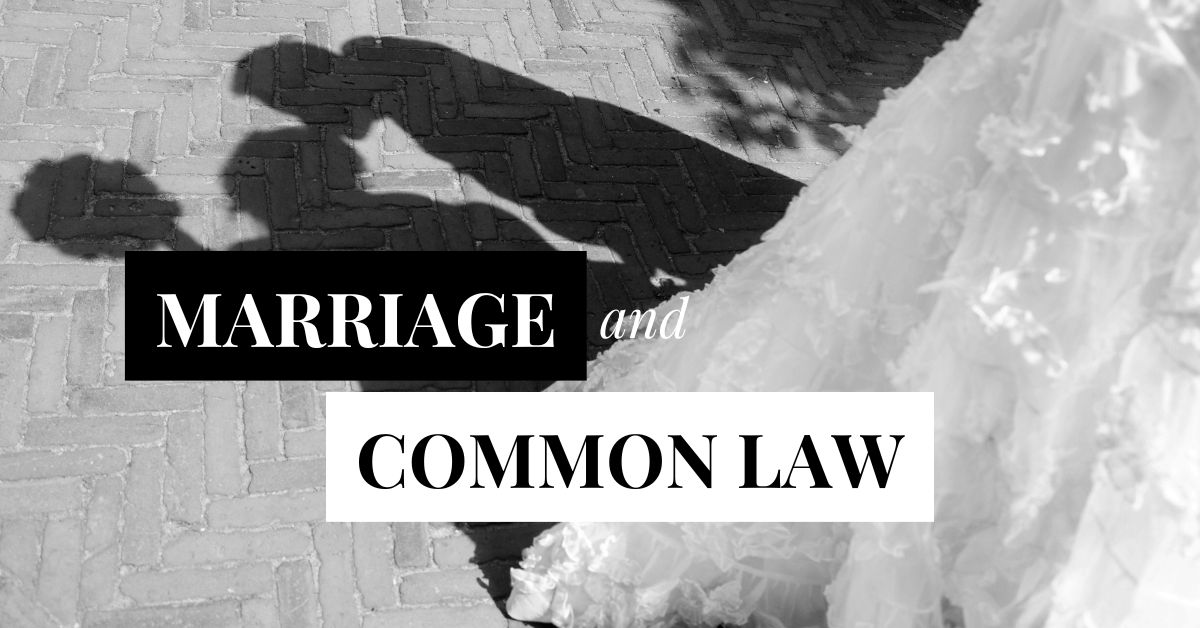
What Is The Difference Between Marriage And Common Law?
When it comes to relationships, legal definitions surrounding marriage and common law partnerships can be confusing. Both types of relationships have unique implications for property, finances, and personal rights. Understanding these differences is essential, especially for mature singles considering formal commitments or seeking clarity about their current relationships.
Here’s a closer look at marriage vs common law, breaking down legal statuses, rights, and the ways these arrangements impact your life.
What Defines a Marriage?
Marriage is a legally binding union between two people. Once married, a couple is formally recognized by law, with specific legal rights and responsibilities.
Key Features of a Legal Marriage:
- License Requirement
Couples must obtain a marriage license and register the union with the appropriate local government body. This process varies slightly by region but is mandatory. - Ceremony
A formal ceremony conducted by a legally authorized officiant is typically required, though it can be simple or elaborate, depending on personal preference. - Legal Recognition Everywhere
A marriage is automatically recognized across all states or provinces and often internationally. - Financial and Property Implications
Married couples are subject to specific tax benefits and responsibilities, joint property ownership laws, and rights concerning inheritance. - Divorce Process
If the marriage ends, a legal divorce is required to dissolve the union and address property, debt, and custody matters.
Marriage provides a clear legal framework, offering protections and benefits designed to support spouses throughout their relationship.
What Is a Common Law Relationship?
Common law relationships, also known as de facto relationships, occur when a couple lives together in a long-term, committed relationship without being legally married. While common law partners may act like a married couple, their union isn’t formalized by a wedding or marriage certificate.
Key Characteristics of Common Law Relationships:
- No Formal Registration
Unlike marriage, there’s no license or ceremony to legally confirm the relationship’s existence. - Living Together
The couple must live together for a specific period (duration varies by jurisdiction) to qualify as common law. - Not Always Universally Recognized
Common law relationships may not have the same legal standing in every region. Some states, countries, or provinces don’t acknowledge common law relationships at all. - Shared Responsibilities
Common law partners often share financial responsibilities, property, and other obligations, although the legal framework around these is less defined compared to marriage.
Key Legal Differences Between Marriage and Common Law
Understanding the differences between marriage and common law relationships can help you make informed decisions about your future. Below are some specific legal distinctions to note:
- Property Rights
- Marriage:
Property acquired during a marriage is typically considered marital property, meaning it’s subject to equal division in the event of divorce or separation. - Common Law:
Property rights vary by region. Unless there’s a legal agreement, common law partners don’t automatically acquire rights to a partner’s property. If you’ve contributed financially to a home your partner owns, you may need to go to court to claim your share.
- Inheritance Rights
- Marriage:
Spouses automatically inherit from each other unless a will states otherwise. Most jurisdictions provide spousal inheritance rights even when a will isn’t in place. - Common Law:
Common law partners don’t have automatic inheritance rights. If one partner dies without a will, the survivor may not receive anything unless explicitly named as a beneficiary.
- Spousal Support (Alimony)
- Marriage:
Divorce often involves spousal support to assist the lower-earning partner. These guidelines are usually more clearly defined in the marriage framework. - Common Law:
While certain jurisdictions allow common law partners to seek spousal support after separation, the requirements might include proof of long-term cohabitation or financial dependence on the partner.
- Tax Benefits
- Marriage:
Married couples often qualify for significant tax savings via joint tax filing or special deductions. - Common Law:
Some tax benefits apply to common law couples, but this depends on your location. For example, in Canada, cohabiting couples may claim similar tax savings after one year, while in the U.S., the rules differ by state.
- Health and Medical Decision Rights
- Marriage:
Spouses are usually granted automatic rights to make medical decisions for their partner in cases of incapacity. They can also access each other’s health benefits through work in most cases. - Common Law:
Common law partners may need a health care directive or other legal documentation to make medical decisions on behalf of their partner. Access to employer health benefits is not guaranteed without proof of the common law status.
Common Law Marriage Rights
Common law marriage rights vary widely by location. Some countries and U.S. states recognize common law marriages and grant these couples the same legal rights as married ones. However, this typically requires meeting certain criteria, including:
- Living Together for a Specific Duration
Some jurisdictions outline a minimum cohabitation period. - Public Recognition of the Relationship
Common law partners might need to present themselves as a married couple publicly. This can include shared finances, using the same last name, or referring to each other as “husband” or “wife.” - Intent to Marry
The couple must agree they’re essentially in a marriage-like relationship without the formality of a license.
It’s important to note that some states, such as Colorado and Texas, do acknowledge common law marriage, while others don’t. If you move to a different state or country, legal recognition of a common law marriage might no longer apply, which can affect important matters like access to spousal benefits and property ownership.
If you’re living in a place that doesn’t formally recognize common law marriage, it’s wise to create legal agreements covering essential areas like property sharing, medical decision-making, and wills.
Practical Steps to Protect Yourself in Common Law Relationships
If you’re in a common law relationship, taking proactive steps can ensure your rights and responsibilities are clear:
- Create a Cohabitation Agreement
This legal document outlines how you and your partner will handle property, expenses, and other responsibilities during your relationship. - Set Up a Will and Power of Attorney
Since common law partners don’t have automatic inheritance or medical decision rights, having a will and power of attorney ensures your wishes are respected. - Keep Financial Records
Maintaining documentation of shared expenses, contributions to property, or co-owned assets can be helpful if disputes arise later. - Research Local Laws
Understand the laws in your area regarding common law marriage and your rights as a partner. Soliciting advice from a family lawyer can provide additional clarity. - Consider Legal Marriage
If you and your partner want clear and widely recognized rights, marriage might be the better choice.
Choosing What Works Best for You
Deciding between marriage and a common law relationship is a deeply personal decision that depends on your values, goals, and lifestyle. Both arrangements have their own set of benefits and challenges, so it’s essential to consider your circumstances carefully.
Having open conversations with your partner about expectations and consulting a legal professional can ensure you’re both protected, whether you choose marriage or a common law relationship. Making informed choices will help you build a secure, fulfilling partnership based on trust and mutual understanding.











